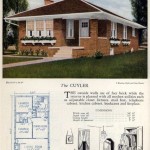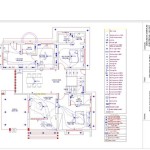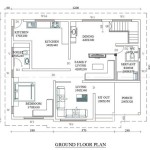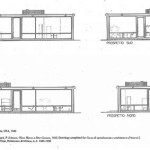Earth Berm House Plans: Design, Benefits, and Considerations
Earth berm house plans represent a unique approach to residential construction, leveraging the thermal mass and protective qualities of the earth to create energy-efficient and sustainable homes. These designs, also known as earth-sheltered or earth-integrated houses, involve partially burying the structure against a hillside or building it against compacted earth berms surrounding the walls. This integration with the surrounding landscape offers several advantages, but also requires careful planning and execution to ensure structural integrity and prevent moisture-related problems.
The fundamental principle behind earth berm construction is harnessing the earth's stable temperature. Below a certain depth, ground temperatures remain relatively constant year-round, shielding the house from extreme temperature fluctuations. This minimizes the need for heating in winter and cooling in summer, significantly reducing energy consumption. Furthermore, the earth berm acts as a natural sound barrier, providing a quieter and more private living environment. In addition to energy efficiency and sound insulation, earth berm houses offer enhanced protection from natural disasters, such as wildfires, tornadoes, and earthquakes.
Designing an earth berm house necessitates a holistic approach, considering site-specific factors such as soil type, climate, and topography. The architectural plans must address structural load-bearing requirements, waterproofing strategies, drainage systems, and ventilation to ensure the longevity and comfort of the dwelling. Careful consideration must be given to the placement of windows and skylights to maximize natural light penetration while minimizing heat loss or gain. The selection of appropriate building materials is also paramount, favoring those that are durable, moisture-resistant, and environmentally friendly.
Key Point 1: Understanding Earth Berm House Design Principles
Creating effective earth berm house plans hinges on understanding several core design principles. These principles dictate how the structure interacts with the surrounding earth and how to optimize the benefits of earth sheltering. Firstly, the orientation of the house is crucial. Ideally, the primary living spaces should face south to maximize solar gain during the winter months. This passive solar heating can significantly reduce the reliance on conventional heating systems. Overhangs can be incorporated into the design to shade the windows during the summer, preventing overheating.
Secondly, the design must address the structural implications of earth berming. The earth exerts considerable lateral pressure on the walls, requiring robust construction techniques. Reinforced concrete, treated lumber, or other durable materials are typically used for the load-bearing walls. The roof structure must also be designed to withstand the weight of the earth cover, as well as snow loads in colder climates. Proper engineering calculations are essential to ensure the structural integrity of the house.
Thirdly, effective waterproofing and drainage systems are critical to prevent water damage. Moisture can seep through the earth and compromise the structural integrity of the walls, leading to mold growth and other problems. A multi-layered waterproofing system is typically employed, consisting of a waterproof membrane, a drainage layer, and a protective covering. The drainage layer allows water to flow away from the walls, preventing it from accumulating against the structure. Proper grading of the surrounding land is also essential to ensure that rainwater is directed away from the house.
Finally, ventilation is crucial for maintaining air quality and preventing moisture buildup inside the house. Natural ventilation can be achieved through strategically placed windows and vents. Mechanical ventilation systems, such as heat recovery ventilators (HRVs) or energy recovery ventilators (ERVs), can also be used to provide a constant supply of fresh air while minimizing energy loss.
Key Point 2: Essential Components of Earth Berm House Plans
Earth berm house plans incorporate several specific components that are crucial for their functionality and durability. These components differentiate them from conventional house designs and require specialized expertise in their planning and execution.
Waterproofing is the next crucial component. A multi-layered waterproofing system is necessary to prevent moisture from penetrating the walls. This system typically includes a waterproof membrane, a drainage layer, and a protective layer. The waterproof membrane acts as a barrier, preventing water from reaching the concrete. The drainage layer, usually consisting of gravel or a specialized drainage mat, allows water to flow away from the walls. The protective layer, such as a polyethylene film, protects the waterproof membrane from damage during backfilling.
Drainage is another essential consideration. A properly designed drainage system is vital to direct water away from the house. This system typically includes perforated drain pipes placed at the base of the walls, along with a layer of gravel to facilitate drainage. The drain pipes should be connected to a sump pit or daylight drain, where the water can be discharged away from the house. Proper grading of the surrounding land is also necessary to ensure that rainwater flows away from the structure.
Ventilation is crucial for maintaining air quality and preventing moisture buildup. Natural ventilation can be achieved through strategically placed windows and vents. Mechanical ventilation systems, such as heat recovery ventilators (HRVs) or energy recovery ventilators (ERVs), can also be used to provide a constant supply of fresh air while mitigating heat loss. The ventilation system should be designed to remove stale air and introduce fresh air, preventing the buildup of mold and other indoor air pollutants.
Finally, insulation plays a critical role in enhancing the energy efficiency of an earth berm house. Insulation is typically placed on the exterior of the walls, between the waterproof membrane and the earth berm. This helps to minimize heat loss during the winter and heat gain during the summer. Different types of insulation can be used, such as rigid foam insulation or spray foam insulation. The choice of insulation depends on factors such as cost, R-value, and moisture resistance.
Key Point 3: Considerations and Challenges in Earth Berm Construction
While earth berm houses offer numerous advantages, there are also several considerations and challenges that must be addressed during the planning and construction process. One of the primary challenges is the potential for moisture problems. If not properly addressed, moisture can seep into the house and cause structural damage, mold growth, and other health issues. Thorough waterproofing and drainage systems are essential to mitigate this risk.
Another consideration is the availability of natural light. Since earth berm houses are partially buried, it can be challenging to provide adequate natural light to all areas of the house. Careful planning is necessary to maximize the use of windows, skylights, and light wells to bring natural light into the interior spaces. The orientation of the house should also be considered to maximize solar gain during the winter months.
Structural engineering is critically important. The walls and roof must be designed to withstand the immense pressure from the surrounding earth. Reinforced concrete is often used for the walls and roof to provide the necessary structural strength. It is crucial to consult with a qualified structural engineer to ensure that the design meets all applicable building codes and standards. The soil type and the depth of the berm must be taken into account when designing the structure.
Cost can also be a factor to consider. While earth berm houses can offer long-term energy savings, the initial construction costs can be higher than those of conventional houses. This is due to the specialized engineering, waterproofing, and drainage systems required. However, the long-term benefits of energy efficiency and reduced maintenance costs can often offset the higher initial investment. Careful budgeting and planning are essential to ensure that the project stays within budget.
Permitting and building codes can also present challenges. Local building codes may not specifically address earth berm construction, requiring additional research and documentation to obtain the necessary permits. It is essential to work with local building officials to ensure that the design meets all applicable codes and regulations. This may involve providing detailed engineering drawings and calculations to demonstrate the structural integrity and safety of the house.
Finally, selecting the appropriate site is crucial. The site should have well-drained soil and a gentle slope to facilitate drainage. The orientation of the site should also be considered to maximize solar gain during the winter months. A geotechnical investigation should be conducted to assess the soil conditions and determine the suitability of the site for earth berm construction. The availability of utilities, such as water, sewer, and electricity, should also be considered.
In summary, earth berm house plans offer a sustainable and energy-efficient alternative to conventional construction. By understanding the design principles, essential components, and potential challenges, individuals can create comfortable and durable homes that are integrated with the natural environment. Careful planning, attention to detail, and collaboration with qualified professionals are essential for the successful completion of an earth berm house project.

Earth Berm Home Plan With Style 57130ha Architectural Designs House Plans

Earth Sheltered Passive Home Plan

Earth Sheltered Plans And Bermed Homes

Grandale Berm Home House Plans Ranch Style Underground

Earth Sheltered Plans And Bermed Homes

Icf House Plans For A Green Earth Sheltered 4 Bedroom Home

Glennon Green Berm Home Underground House Plans And More

Earth Bermed Natural House Plan

26 Luxury Hiline Home Plans Underground Homes House Earth Sheltered

Earth Sheltered Homes Grand Designs
Related Posts








